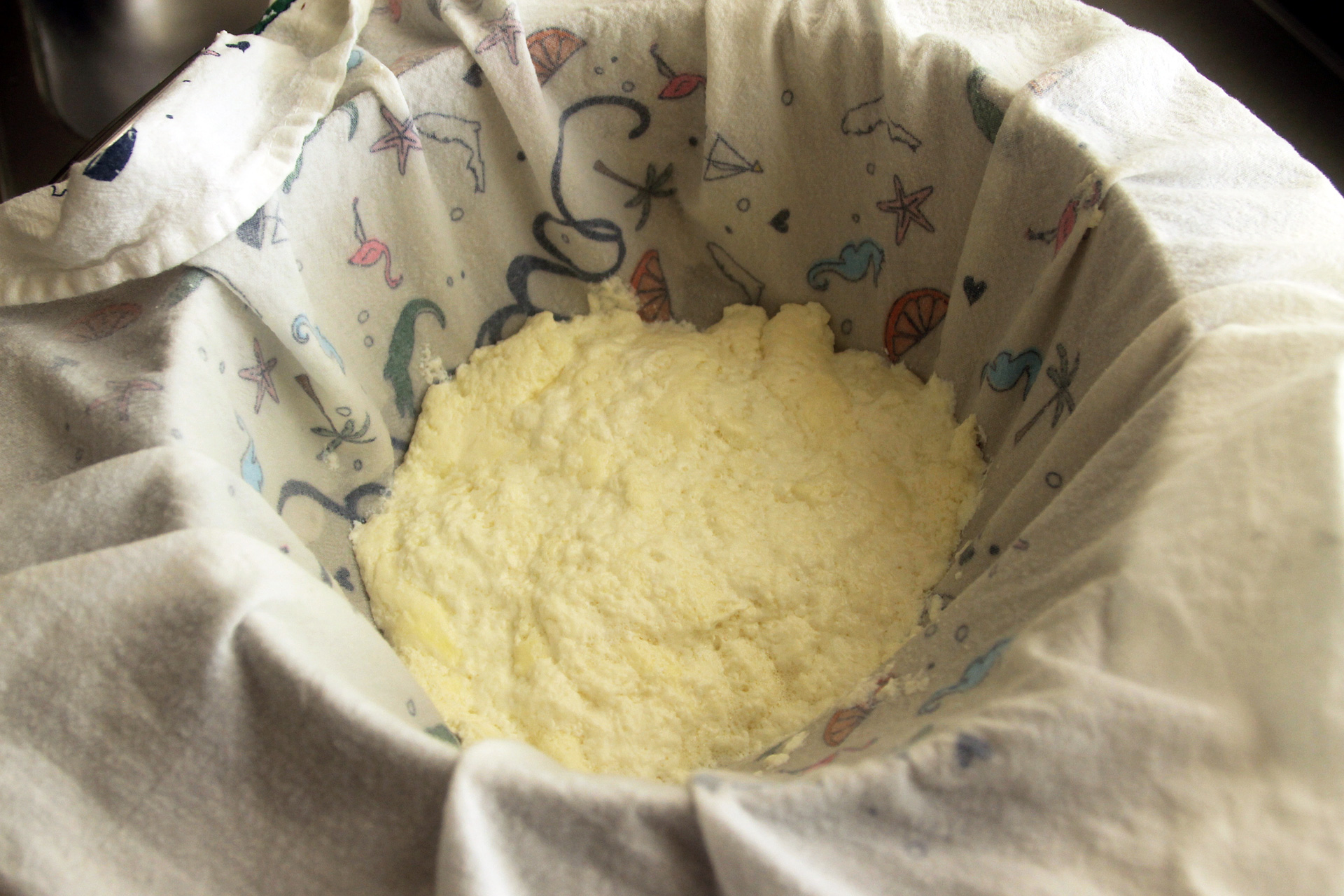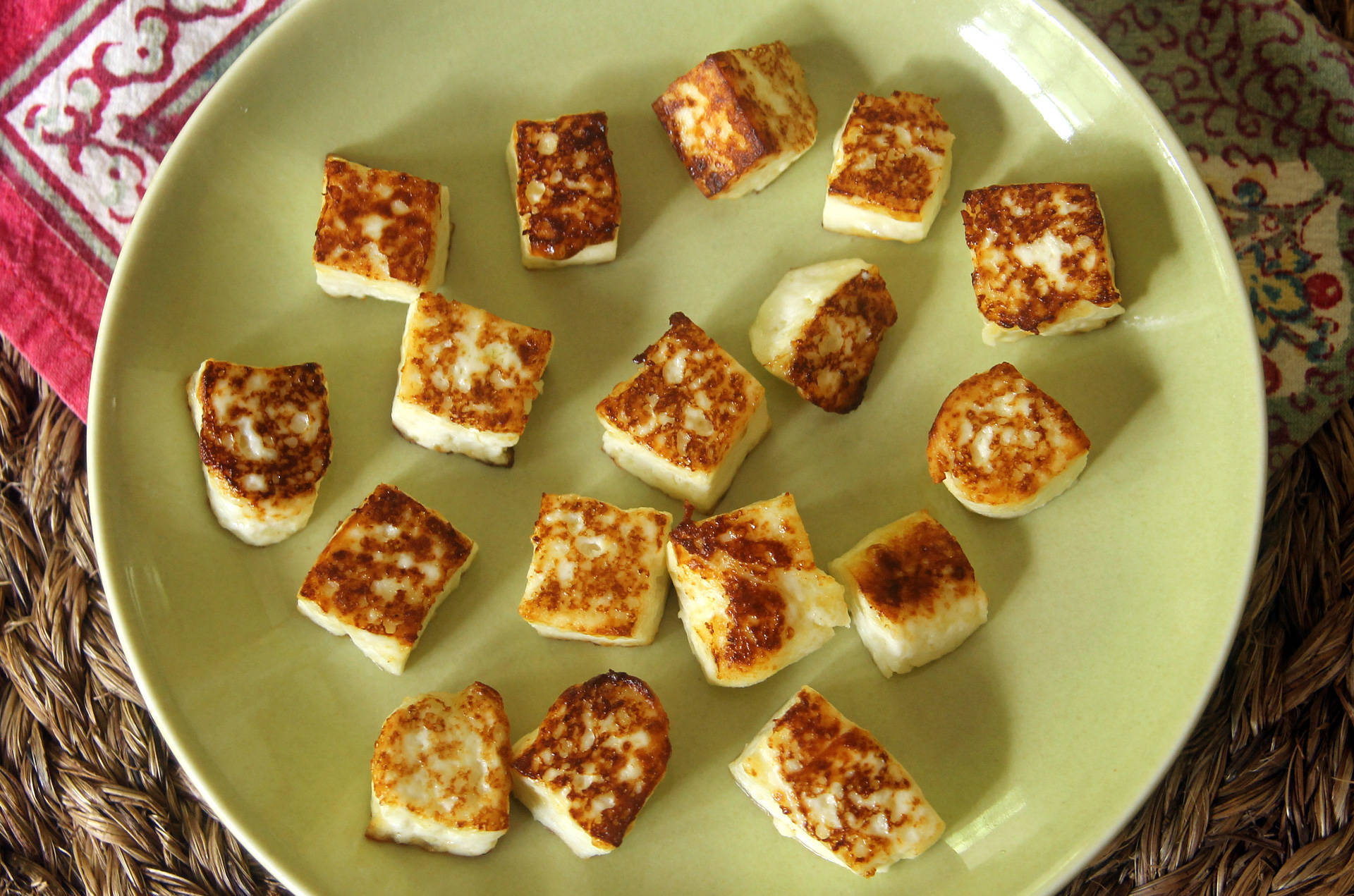I’m going to let you in on a little secret: paneer, that delicious squeaky cheese found in saag paneer and many other Indian and South Asian dishes, can be made in almost the exact same way in which we make ricotta. Yes, somehow, through the magic of heavy pressure, crumbly, tender ricotta can transform into a non-melting, sear-able version of itself. And while paneer is, of course, a wonderful thing to make should you want to delve into more complicated Indian cooking, it is also quite tasty eaten on its own, browned up in a skillet.
The first steps are exactly like making ricotta cheese. You’ll combine milk, buttermilk and salt in a heavy pot and heat it until the curds begin to separate from the whey. Let it incubate for half an hour before gently scooping the curds into a lined colander.


Now it’s time to get your hands (a little) dirty. Once the curds have drained for about 10 minutes, bring the sides of the towel together to form a sack. Twist and squeeze and twist and squeeze until you’ve gotten as much of the whey out of the curds as possible. You’ll likely want to scrunch and wiggle the curds around a few times to get to any pockets of hidden whey inside.

Next, give the sack a really good twist to make sure the curds are in a taut ball. Place the ball of curds, still in the towel, on a large plate. Bring the twisted tail of towel to the side of the ball (see picture above) and then place a second plate on top.

To weigh down the cheese, grab your Dutch oven (rinse it out first!) and place it on top of the second plate. It should significantly smush down the cheese ball into a thick pancake. If necessary, wiggle the Dutch oven around so that it lays as flat as possible on top of the cheese. Now let the whole thing just sit there for about an hour.


